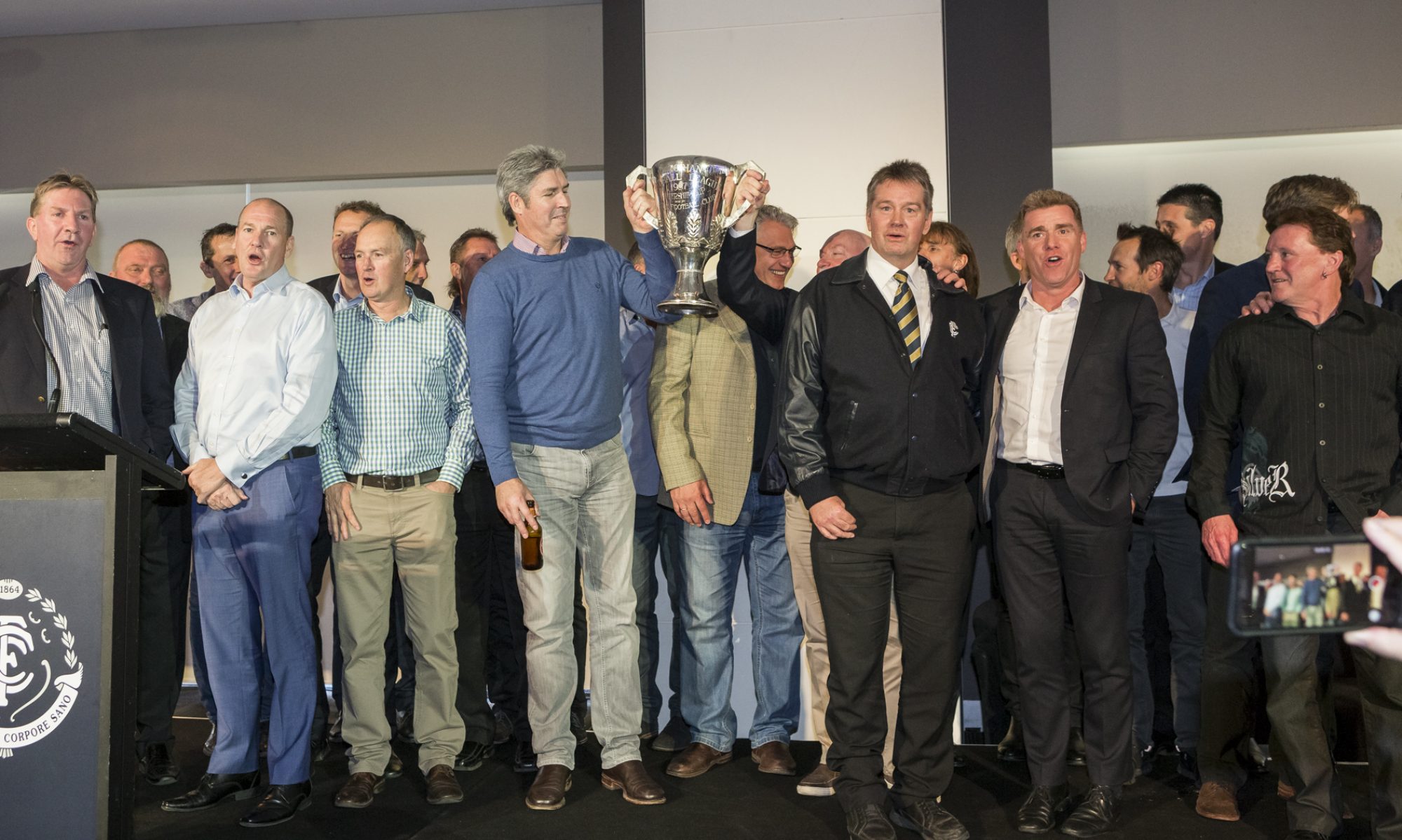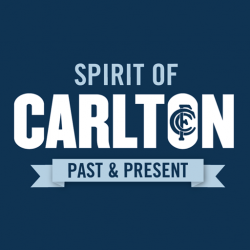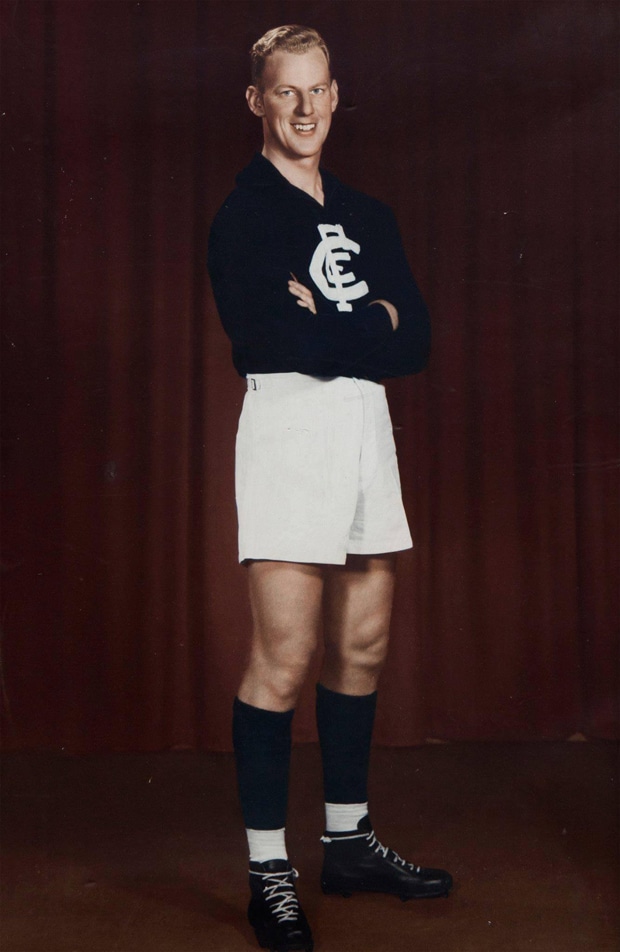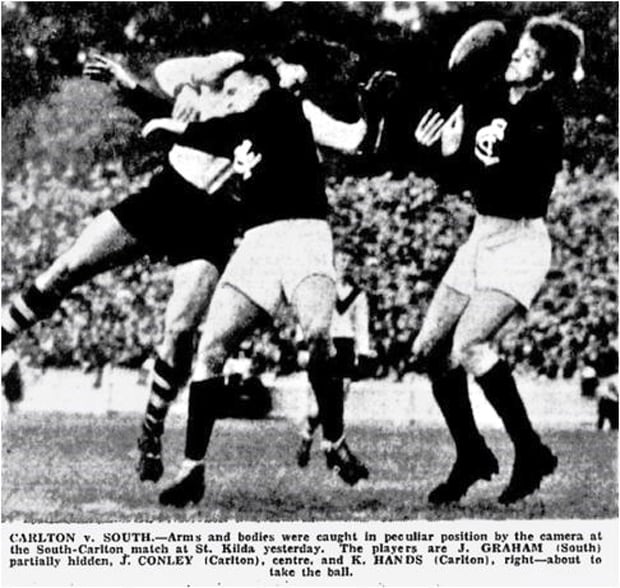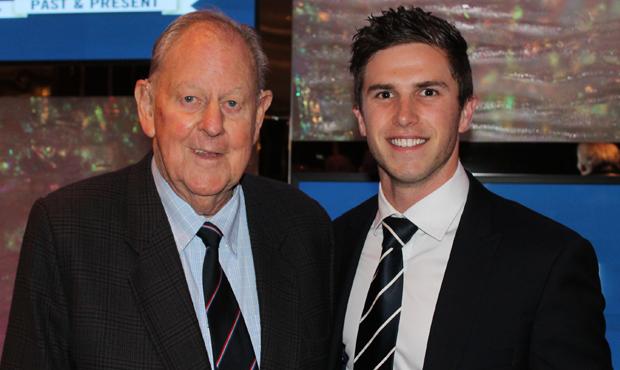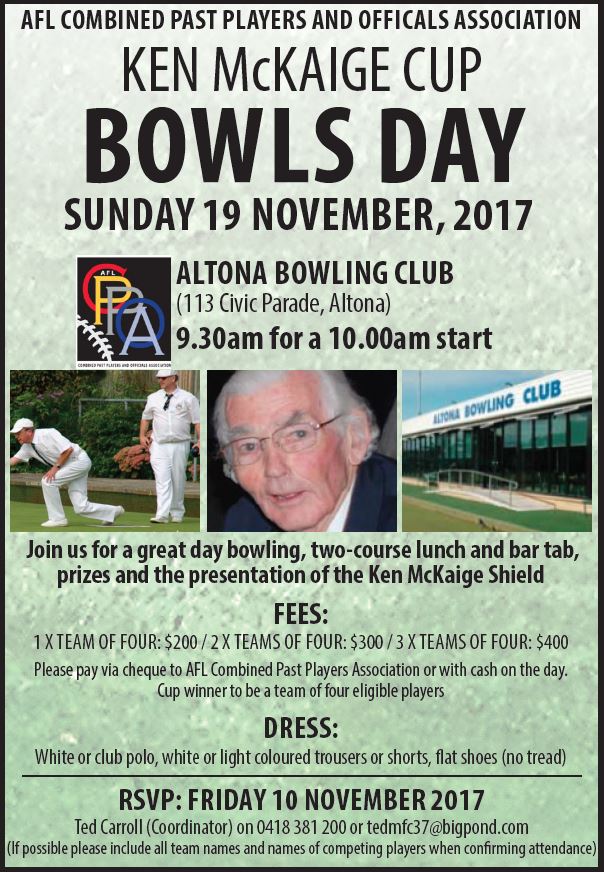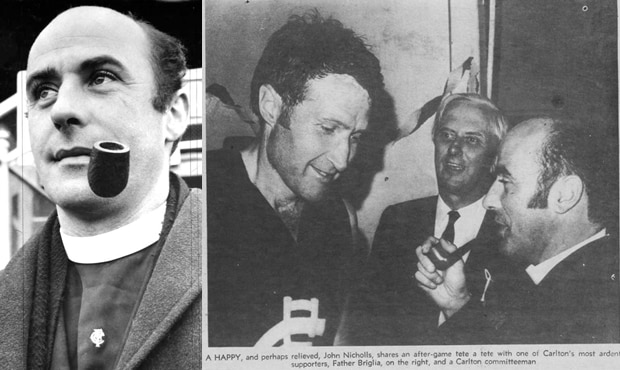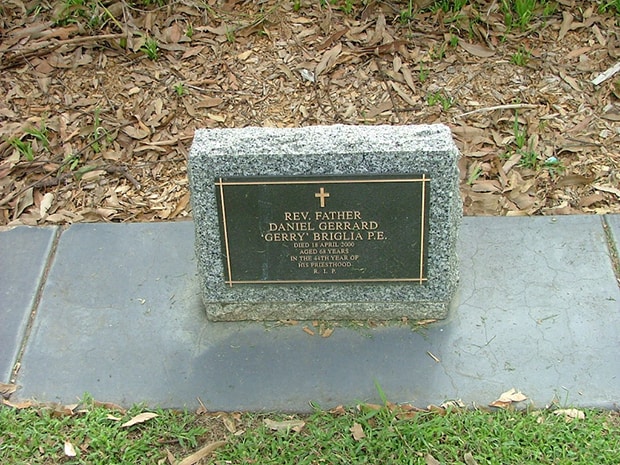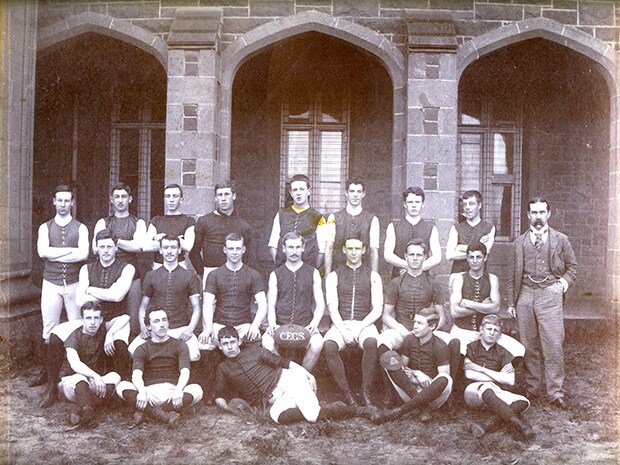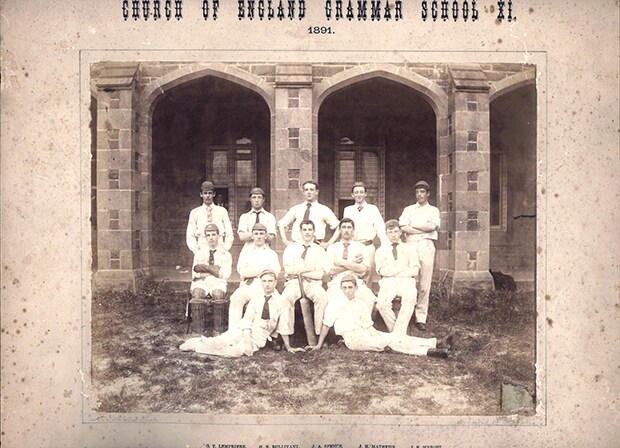 Career : 1979 – 1990
Career : 1979 – 1990
Debut : Round 3, 1979 vs Essendon, aged 21 years, 101 days
Carlton Player No. 877
Games : 209
Goals : 283
Guernsey No. 7
Last Game : Round 18, 1990 vs Footscray, aged 32 years, 229 days
Height : 180 cm (5 ft. 11 in.)
Weight : 79 kg (12 stone, 6 lbs.)
DOB : 19 December, 1957
Premiership Player: 1979, 1981, 1982, 1987
Best and Fairest: 1983, 1986 (Equal)
Night Premiership (Captain): 1983
Leading Goalkicker : 1980 (51)
Captain : 1984 – 1985
All Australian 1987
Team of the Century
Carlton Hall of Fame
Carlton Legend
A brilliant, hard-running, aggressive mid-fielder in four Carlton Premiership teams, Wayne Johnston was a player ahead of his time. Years before athletic endurance and absolute intensity became prime requirements of a league footballer, Johnston; ‘The Dominator’ carved his name with capitals into the history of the Carlton Football Club. An outstanding big-occasion player, he was absolutely ruthless in his pursuit of victory.
Originally from Wandin North in Melbourne’s outer-eastern suburbs, Johnston’s path to glory at Princes Park was not a smooth one. Recruited by VFA club Prahran as an 18 year-old in 1975, ‘Johnno’ was a star half-forward for the Two Blues from his first game, and this led to an invitation to join pre-season training at Carlton in 1978. But by his own admission, his first experience of the physical demands of league football caught him out. Rejected as lacking the will to play at elite level, he was sent back to Prahran, somewhat humiliated and with a burning desire to prove his doubters wrong.
Sure enough, Johnston’s ball-winning ability and raking left foot spurred Prahran into the VFA finals again in 1978. He was outstanding when the Two Blues accounted for Preston in a classic ’78 VFA Grand Final, and for the third year in a row, Johnston finished among the top three in Prahran’s Best and Fairest award. In his 68 games at Toorak Park, Johnno steered through 173 goals – an effort that three decades later would win him a place in Prahran’s Team of the Century. More importantly, his confidence and single-minded determination were vindicated when representatives from the Melbourne Football Club came calling, with an invitation to join the Demons.
Before that could happen however, Johnston needed a clearance from Carlton. Alerted by Melbourne’s interest, the Blues decided to take one more look at him during the 1979 pre-season. And so, in the first scheduled practice game, Johnno was matched against another VFA rising star; Coburg’s Phil Cleary. By half-time on that Saturday afternoon at Princes Park, a rampaging Johnston had booted four goals, and Cleary’s dream of playing VFL football had been shattered. Melbourne was told to go fly a kite, and Wayne Johnston became a Blue.
Carlton began their 1979 VFL Premiership campaign by comfortably beating Essendon at Waverley Park in late March. Johnno played on his preferred right flank, (alongside Mark Maclure and Trevor Keogh) in a team still smarting from their semi-final defeat by Collingwood the previous year. Robbert Klomp, Alex Marcou and Peter Francis also started their careers in that match, and all four debutantes were destined for Premiership glory.
Johnston was a consistent contributor throughout that fairytale first season at Princes Park. Steady more than spectacular, his tackling, shepherding and hunger for the contest quickly won him many admirers. Carlton lost only three times on the way to securing the minor Premiership, and set up an eagerly-anticipated Grand Final clash with Collingwood by comfortably accounting for North Melbourne in the second semi final.
When Johnno and his team-mates burst through Carlton’s banner to the roar of more than 112,000 fans at the MCG on Grand Final day, 1979, he was playing just his 20th game of VFL football. Sodden by days of rain, the centre of the ground was a quagmire that turned the game into a contest of will rather than skill. Collingwood held the ascendancy early, and were five goals up mid-way the second term, before Blues’ captain-coach Alex Jesaulenko – until then, unable to break free of Magpie Kevin Morris in the centre – turned the match by switching places with his dynamic back pocket Wayne Harmes.
Inspired by Harmes’ tenacity, the dominance of Mike Fitzpatrick in the ruck, and the hard-running of Johnson and wingman Peter Francis, Carlton fought their way back into the game to lead by four points midway through the last quarter. It was then, just as Jesaulenko was carried off with a broken ankle, that Harmes’ brilliant chase, dive and swipe at the ball in a forward pocket provided an opportunist goal for rover Ken Sheldon. Desperately tired, yet inspired, Carlton hung on to win by five points. Harmes won the Norm Smith medal, and Wayne Johnston celebrated a Premiership in his debut season.
Unfortunately, the euphoria surrounding that 12th flag for the Blues lasted only a matter of weeks. In October of 1979, the club was plunged into turmoil by a boardroom revolt that resulted in club President George Harris being voted out of office at an extraordinary general meeting of members. Harris’ strongest ally; Alex Jesaulenko left too, forcing the club into a snap decision to appoint recently-retired Premiership ruckman Peter ‘Percy’ Jones as our new senior coach.
‘Percy’ took the talent-laden Blues to second place on the ladder, before successive finals losses by big margins brought a shocking end to Carlton’s season. Jones was promptly shifted sideways to the match committee, and replaced by 1976 Hawthorn Premiership coach David Parkin. Meanwhile, Johnston was coming off an impressive second year. He had rarely missed a game, and finished up as Carlton’s top scorer for the season with 51 goals.
The Johnston-Parkin era got off to a delayed start in 1981. Injury kept Johnno on the sidelines until early June, and he was still not back to peak fitness by the time the home and away rounds concluded with the Blueboys as minor Premiers yet again. Carlton then thumped Geelong by 40 points in the second Semi-Final (with flankers Johnston and Peter Bosustow each contributing three goals) and booked another Grand Final showdown against Collingwood.
This time, the MCG surface was firm and dry when the central umpire bounced the ball in front of another packed house on Grand Final day. In typical fashion, both sides attacked the ball-carrier ferociously in the opening exchanges – one of which saw Johnston steamrolled by magpie Rene Kink. It took Johnno some time to recover from that big hit, but when he gathered the ball off the pack and his long bomb bounced through in the second term, he made sure Kink was the first to know about it. Never slow to dish it out, Johnno also broke the jaw of his tagger, Graeme Allen, in an off the ball incident.
Rain began falling at half time. From then on, with captain Mike Fitzpatrick controlling the ruck, and defenders Bruce Doull and Ken Hunter holding sway across half-back, the Blues steadily wore Collingwood down. Nine points adrift at the last change, Collingwood had nothing left in the tank, and only Carlton’s inaccuracy kept the final margin to 20 points. Bruce Doull was a worthy Norm Smith Medallist, as Princes Park erupted in celebration of our thirteenth VFL flag. 
Sometime during the following weeks – details are sketchy as to the exact date – a moment occurred that led to one of the most apt football nicknames of all being bestowed on Wayne Johnston. Late one evening at a popular inner-city nightclub, a group of Carlton senior players came upon him, sitting at a table with no less than four attractive young women. ‘Having a good night, Johnno?’ someone asked. Looking up with a huge smile on his face, Wayne replied; ‘Boys, I’m dominating here.’ From that night on, he became The Dominator – on and off the field.
By coincidence, Johnston hit his straps in 1982, living up to his nickname and helping to drive the Blues into yet another finals campaign. Carlton wound up third on the ladder, and began the defence of their Premiership title with an electrifying first Qualifying Final victory over Hawthorn. Just five points up at half time in a tight contest, the Blues smashed the Hawks with a devastating burst of eight goals after the 20-minute mark of the third quarter, and won easing up by 58 points.
The only drawbacks to that great win were the reports and subsequent suspension of Peter Bosustow (for 1 week) and Johnston (2 weeks). This meant that if Carlton was to beat minor Premiers Richmond in the following week’s Semi-Final, Johnston would be ineligible for the Grand Final. However, that was not to be. Richmond had devised a means of slowing down Carlton’s run-on game, by scragging, blocking and holding on to the Blues’ playmakers. They gave away numerous 15-metre penalties, and it wasn’t great to watch, but their method worked. They beat Carlton by four goals, and sat back to watch while Carlton and Hawthorn met in another do-or-die Preliminary Final.
In that third tough elimination match in succession, Carlton bounced back to conquer Hawthorn once more, thanks in no small part to the heroic effort of stand-in full back Rod Austin. He was knocked cold in the first five minutes, but ‘Curly’ recovered to blanket Hawthorn’s spearhead Leigh Matthews for the rest of the match. Carlton won by five goals, and earned another crack at the Tigers for the ’82 flag. Tragically, Austin came out of the game injured was and ruled out of the decider, but Johnston proved he was fit and ready to return.
Even before the first bounce of the ball on Grand Final day, the mind games began when Carlton coach David Parkin sent 22 men (two more than allowed at the time) out onto the field. All of them stayed on the ground throughout the pre-game ceremonies, and it wasn’t until the teams were making their way to their positions that Frank Marchesani and David Clarke disappeared up the race – leaving Johnston and Jim Buckley in their places.
Johnston was just sensational in those early hectic minutes. First, Mark Maclure gathered the ball off the pack, and dished off to Johnno who ran into an open goal for the perfect start to the Blues. A minute later, Johnston’s fierce tackle on Richmond’s Alan Martello caused the ball to spill to Harmes, who slotted through Carlton’s second from a tight angle. And when Rod Ashman added a third major from a free kick, the Blues were 19 points up.
Just then, a fierce hailstorm swept across the ground, and an all-in brawl erupted on the outer wing. Richmond’s Jimmy Jess crashed into Ken Hunter and knocked him senseless, and Martello ended Carlton spearhead Ross Ditchburn’s day with an accidental kick to the back of the head. Johnston took the resulting free kick to boot his second goal for the term, but at quarter time the margin was back to four points and Carlton was two men down.
Those injuries, and the constant rain, forced Parkin to reshape his team. He sent defender Robbert Klomp to full-forward, called Bosustow off the bench onto a forward flank, and gave Johnston the tough task of quelling Richmond’s dangerous centreman Geoff Raines. From then on, although erratic in front of goal, the Blues gradually asserted their authority – despite the distraction of a female streaker who ran on to the ground midway through the third term.
An impregnable defence and a winning ruck were the keys to surely one of the Carlton Football Club’s greatest victories. Val Perovic, Bruce Doull, Wayne Harmes and Ken Hunter (who bravely returned to the fray during the second quarter) were all superb down back, while ‘Wow’ Jones and Mike Fitzpatrick held sway around the stoppages. But in the eyes of most observers, the most influential player on the field was Wayne Johnston. The Dominator made his name on that memorable afternoon, by cutting Raines right out of the match, and posing a constant threat himself to the Tiger defenders. With an ounce of luck he would have kicked five goals, and there wasn’t a Bluebagger watching on who wasn’t gobsmacked when Johnno missed out on the Norm Smith Medal. That honour going instead to Richmond’s Maurice Rioli.
Carlton began a period of constant success over Richmond from then on; thrashing the Tigers by ten goals in round one of 1983, and following up with another emphatic victory over them in the Grand Final of the Sterling Cup – a knockout competition held at Waverley Park on Tuesday nights during the regular season. Johnston captained the victorious Blues on that cold night in July, and caused a lot of mirth when he made his televised victory speech with his mouthguard still in place!
But after that minor triumph, Carlton’s inconsistency – we managed four wins and four losses with margins of 50 points or more in 1983 – condemned the Blues to a fifth-place finish, and a 33-point Elimination Final defeat by Essendon. Carlton’s brave attempt at three flags in a row had failed, but at least there was some consolation for the Dominator a few weeks later, when he was a deserving winner of his first club Best & Fairest award.
Mike Fitzpatrick retired after the 1983 season, and Johnston knocked back a big offer from Collingwood to take on the role of the Blues’ next captain. He held the post for two years while Carlton continued as a regular finals contender, but couldn’t progress past the Semi-Finals. In 1986 he relinquished leadership of the team to Mark Maclure, just as Carlton announced an agreement to swap coaches with Fitzroy. After five seasons and two flags with the Blues, David Parkin went to Brunswick St, and three-time Carlton Premiership player Robert Walls returned to Princes Park to take the reins of a team very much still in flag contention.
With his playing list strengthened by the likes of Craig Bradley, Stephen Kernahan, Peter Motley, Mil Hanna, Jon Dorotich and others, Walls took the Blues into yet another Grand Final in his debut year, only to run into a committed Hawthorn team that struck back from its Second Semi-Final defeat by the Blues in the best possible way. With their full-forward Jason Dunstall rampant, the spirited Hawks triumphed by 42 points. A fortnight later, Johnston won his second club Best and Fairest in a tie with star South Australian recruit Craig Bradley.
Happily for Carlton, revenge on the Hawks wasn’t long in coming. Under new captain Stephen Kernahan, the Blues marched into the 1987 finals on top of the ladder, and firmed into Premiership favouritism with another 15-point second Semi-Final win over the gang from Glenferrie. When Hawthorn beat Melbourne (with a goal after the siren) in the Preliminary Final, it set up a rematch of the previous years’ flag decider.
Construction works at the MCG restricted the ’87 Grand Final crowd to just under 93,000, on a day that saw the temperature soar past 30 degrees. Even before the first bounce, those fans were treated to yet another sensational opening quarter from the Dominator. Ruck-roving to Justin Madden, he was given a free kick when he pointed out to the umpires that Hawthorn had too many men inside the centre square. A minute later, he goaled from a free kick, then was reported for high contact when he crashed through Hawthorn’s rugged wingman, Robert DiPierdomenico. Next, he ran onto a spillage at half-forward and launched a long bomb that sailed through for his second goal – giving the Blues some real momentum. Hawthorn fought their way back into contention at half time, but the fresher, fitter Blues handled the tough conditions better after that, and ran out 33-point winners. Carlton’s centre half-back David Rhys-Jones won the Norm Smith Medal, and Wayne Johnston joined a select group of four-time Premiership players for the Blues.
The Carlton-Hawthorn rivalry continued into 1988. Hawthorn were minor Premiers, ahead of Collingwood, Carlton, West Coast and Melbourne. In the first week of the business end of the season, Carlton thrashed Collingwood in the Qualifying Final at the MCG. Playing in the centre, Johnston beat three opponents and was clearly Best on Ground.
Next up, the Blues faced Hawthorn in the second semi on a wet and windy day at Waverley – and Wayne Johnston’s finals campaign ended with a massive hit from Hawthorn’s Gary Ayres. Johnno left the field with three broken ribs, and the Hawks ran out winners by 21 points. Without their Dominator, the Blues suffered a shock loss to Melbourne in the following week’s Preliminary Final, ending the year in bitter disappointment.
Although there were ongoing concerns about his fitness, Johnston saddled up for his eleventh season in 1989. Carlton began the year with successive losses to Footscray and St Kilda, before making the trek down the Western Highway to Geelong in mid-April. Early in that match, Johnston was lined up and ironed out again – this time, by Gary Ablett. His ribcage suffered further damage, and he missed another five weeks.
Johnno didn’t make it back until the round eight match against Collingwood, at Waverley in late May. Heavily strapped and playing in defence, he bolstered a team that obviously lacked passion, and lost by five goals. By June, Carlton’s committee had lost confidence in Robert Walls, and sacked him halfway through his third year. Alex Jesaulenko then stepped back into the coaching role he had vacated a decade earlier. In mid-July, Johnston succumbed to his injuries, and didn’t play a senior match again that year.
The Dominator soldiered on into 1990, but by mid-season it was obvious that age and wear had taken their toll on his battered body. Eventually, Carlton’s match committee took the unenviable step of telling him that his time was up, and one of the great Navy Blue careers ended in round 18 at the Western Oval in August. Carlton handed the Bulldogs a 31-point defeat that day, in an appropriate farewell to a champion. Simon Minton-Connell starred for the Blues with eight goals, while Johnno showed flashes of his class and was named among his team’s best players one last time.
Often described as Carlton’s greatest-ever finals performer, Wayne Johnston collected even more accolades in the years after his retirement. Following on from his four Premierships as a player, two Best and Fairest awards and two seasons as captain of the Blues, he represented Victoria three times in interstate matches, and was an All Australian in 1987.
He was elected to the Carlton Hall of Fame in 1991. At the end of the decade, he was selected on a half-forward flank in Carlton’s Team of the Century, and is one of an elite group of just ten great players so far named as Legends of the Carlton Football Club. Perhaps his career was summed up best by David Parkin, who once said of the Dominator;
‘‘He had an enormous capacity to pump himself up and get the best out of himself when it mattered. He had a fire in his belly – a passion for the contest like few other players’‘
Post AFL, Johnston had stints as captain-coach with SANFL club Sturt, then Sebastapol in the Ballarat League. In 1993, he was lured to the Brisbane club Kedron-Grange, where his great mate Jim Buckley was working part-time as the football manager. At the time, the Redlegs were under the direction of another former Blue in Neil Gaghan, who ended up resigning three weeks into the season due to work commitments. Johnston stepped up for one last season as playing-coach, before retiring for good when he was told that the back problems he had been carrying for years required extensive surgery.
Milestones
100 games : Round 2, 1984 vs Fitzroy
150 games : Round 21, 1986 vs Footscray
200 games : Round 14, 1989 vs Essendon
100 goals : Round 19, 1981 vs South Melbourne
200 goals : Round 15, 1984 vs Collingwood
Career Highlights
1979 – 8th Best & Fairest
1979 – Premiership Player
1980 – 8th Best & Fairest
1981 – Premiership Player
1982 – 4th Best & Fairest (on countback)
1982 – Premiership Player
1983 – Robert Reynolds Memorial Trophy: Best & Fairest Award
1983 – Night Premiership Player and Captain
1984 – 5th Best & Fairest
1986 – Equal Robert Reynolds Memorial Trophy: Best & Fairest Award
1987 – 2nd Best & Fairest
1987 – Best Clubman Award
1987 – Premiership Player
1988 – 3rd Best & Fairest
